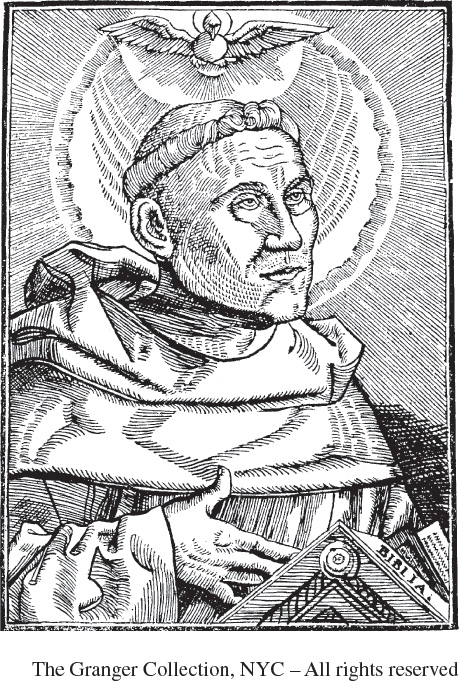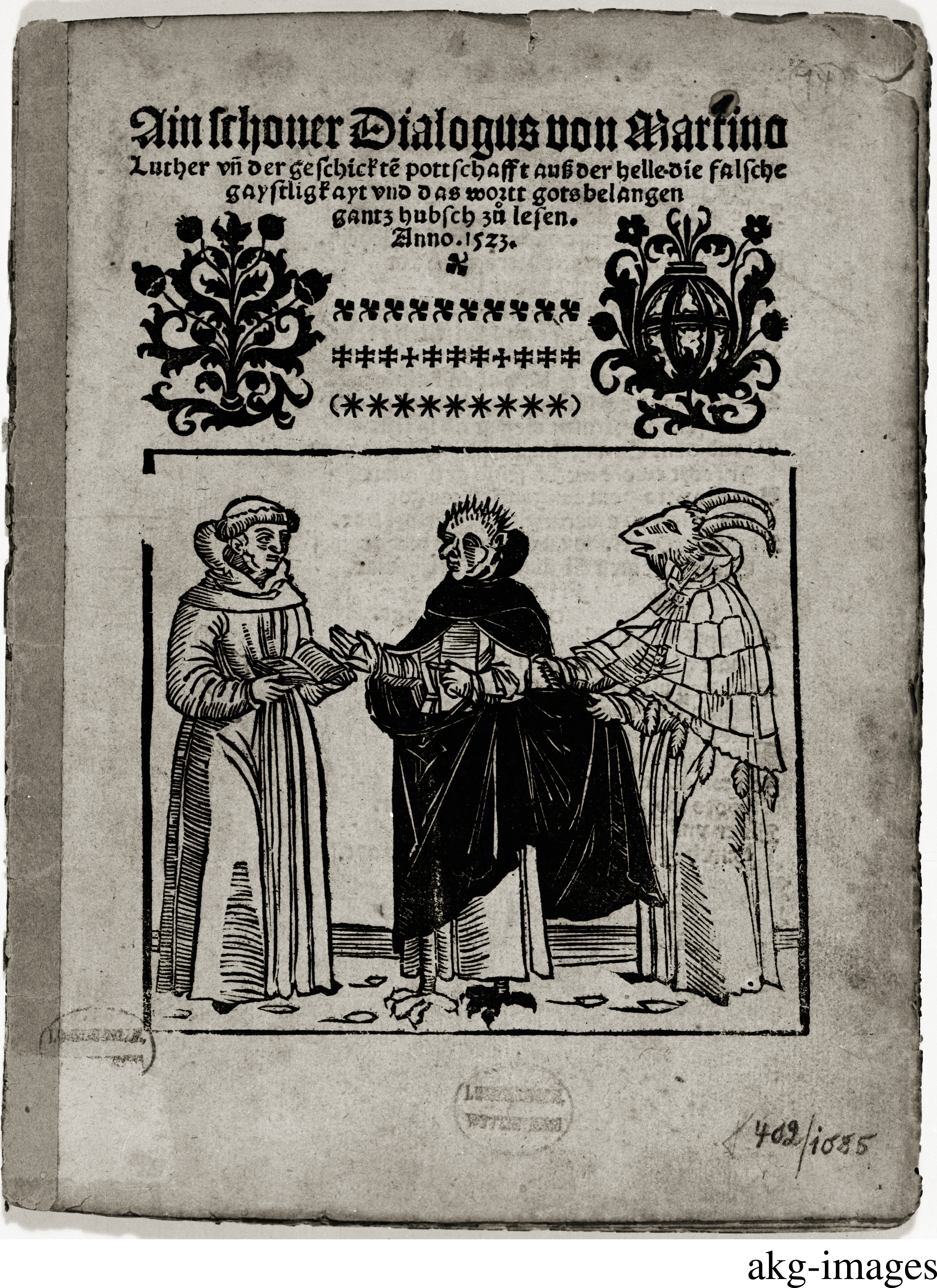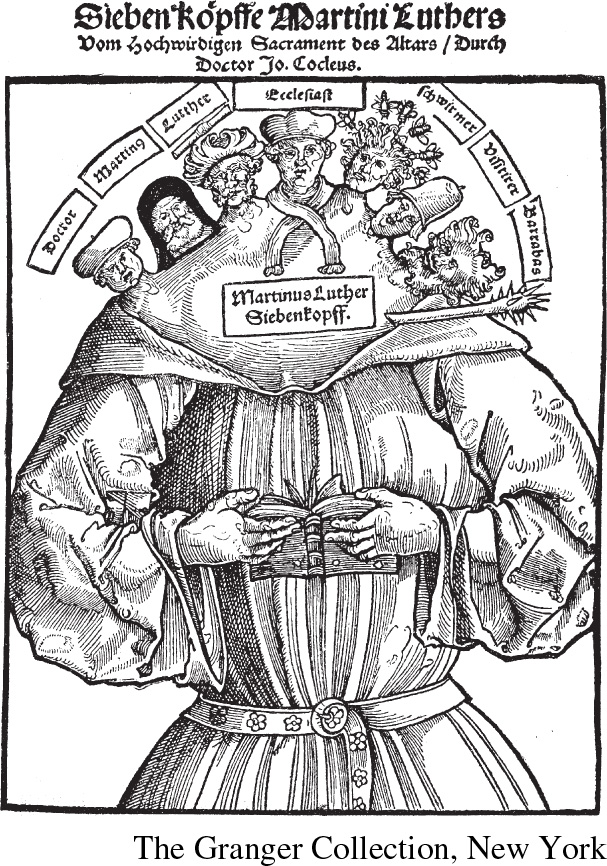Contrasting Views: Martin Luther: Holy Man or Heretic?
Printed Page 470
Important EventsWhen Martin Luther criticized the papacy and the Catholic church, some hailed him as a godly prophet and others condemned him as a heretic. Both Protestants and Catholics used popular propaganda to argue their cause. They spread their message to a largely illiterate or semiliterate society through pamphlets, woodcuts, and broadsheets in which visual images took on increasing importance, to appeal to a wide public. These polemical works were distributed in the thousands to cities and market towns throughout the Holy Roman Empire. A few were even translated into Latin to reach an audience outside of Germany.
A positive image of Luther, published in 1521, depicts him as inspired by the Holy Spirit (Document 1). The 1523 woodcut shows Luther arguing against his Catholic opponents, who are portrayed as devils hiding in clerical robes (Document 2). An anti-Luther image from a few years later represents him as a seven-headed monster (Document 3), signifying that the reformer is the source of discord within Christianity. This image appeared in a book published in 1529 by the Dominican friar Johannes Cochlaeus, one of Luther’s vociferous opponents.
Visual examples of religious propaganda worked effectively to demonize enemies and to contrast good and evil. The 1520s saw the most intense production of these cheap polemical visual prints, but the use of visual propaganda would continue for more than a century in the religious conflict.
1. Luther as Monk, Doctor, Man of the Bible, and Saint (1521)

This woodcut by an anonymous artist appeared in a volume that the Strasbourg printer Johann Schott published in 1521. In addition to being one of the major centers of printing, Strasbourg was also a stronghold of the reform movement. Note the use of traditional symbols to signify Luther’s holiness: the Bible in his hands, the halo, the Holy Spirit in the form of a dove, and his friar’s robes. Although the cult of saints and monasticism came under severe criticism during the Reformation, the representation of Luther in traditional symbols of sanctity stressed his conservative values instead of his radical challenge to church authorities.
2. Luther Takes On his Devilish Catholic Opponents (1523)

All three figures are wearing monk’s robes, but only Luther appears as trustworthy in this woodcut printed by Melchior Ramminger. The image appears on the title page of an anonymous pamphlet called A Pretty Dialogue between Martin Luther and Messengers Sent from Hell. Ramminger was one of many Protestant printers in Augsburg, a free imperial city that served as a major commercial, financial, and printing hub for the Holy Roman Empire.
3. The Seven-Headed Martin Luther by Johannes Cochlaeus (1529)

The seven heads are labeled (from left to right) doctor, Martin, Luther, ecclesiast, enthusiast, visitirer, and Barrabas. Enthusiast was a term of abuse, applied usually by the Catholic church to Anabaptists and religious radicals of all sorts. Visitirer is a pun in German on the word Tier, meaning “animal.” Cochlaeus also mocks the new practice of Protestant clergy visiting parishes to check up on pastors’ and parishioners’ adherence to Reformed church doctrines and rituals in order to enforce Christian discipline. From left to right, Luther’s many heads gradually reveal him to be a rebel: according to the Bible, the Romans had condemned the rabble-rouser Barrabas to die but instead freed him and crucified Jesus in his place. The number seven also alludes to the seven deadly sins.
Questions to Consider
- Why did Johannes Cochlaeus condemn Martin Luther? How did he construct a negative image of Luther?
- Evaluate the visual representations of Luther as a godly man. Which one is more effective?